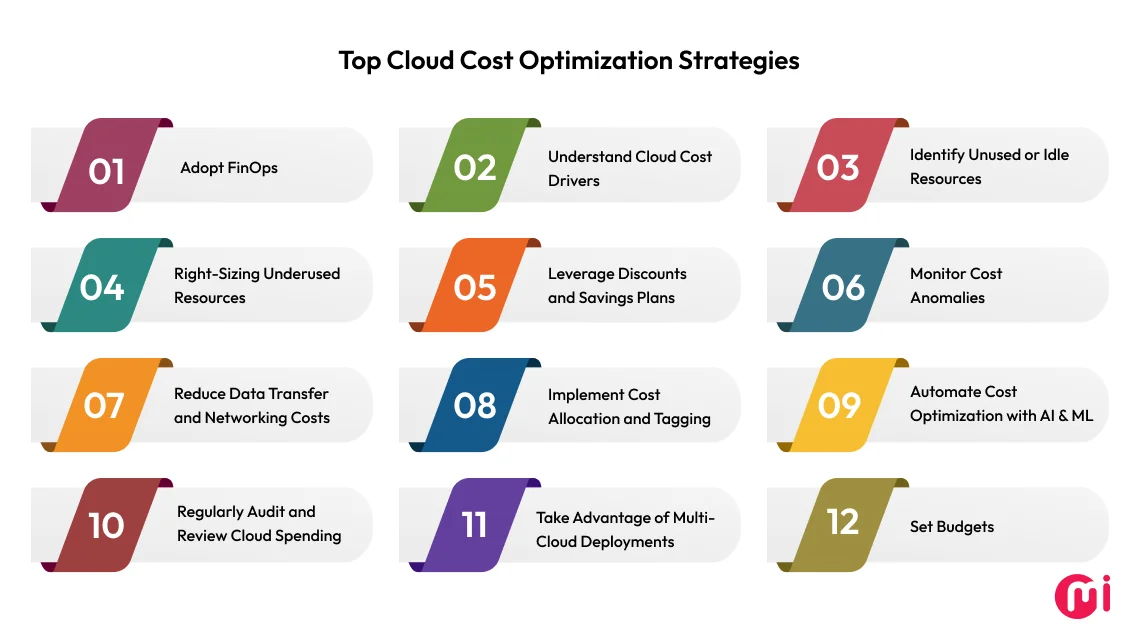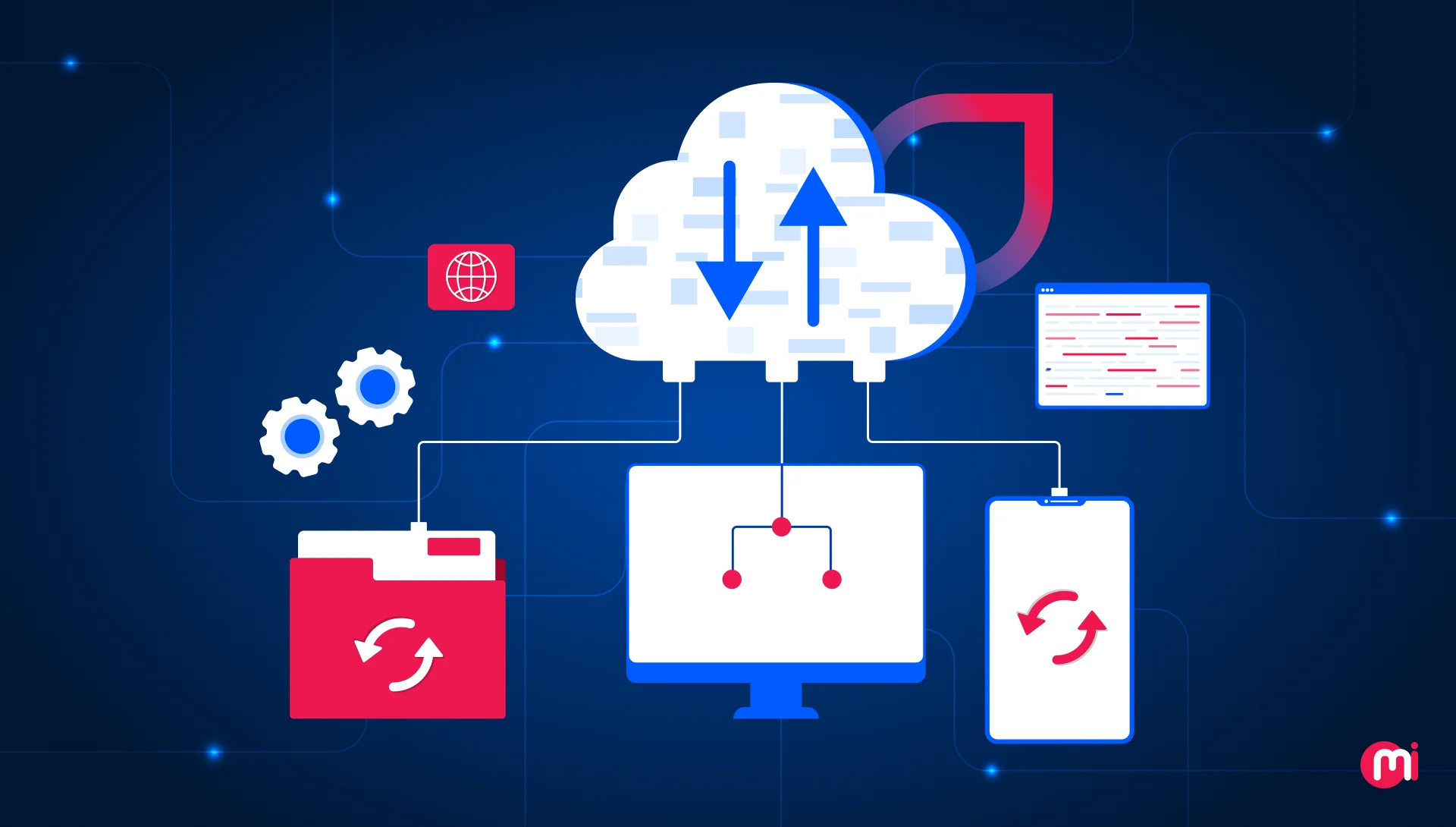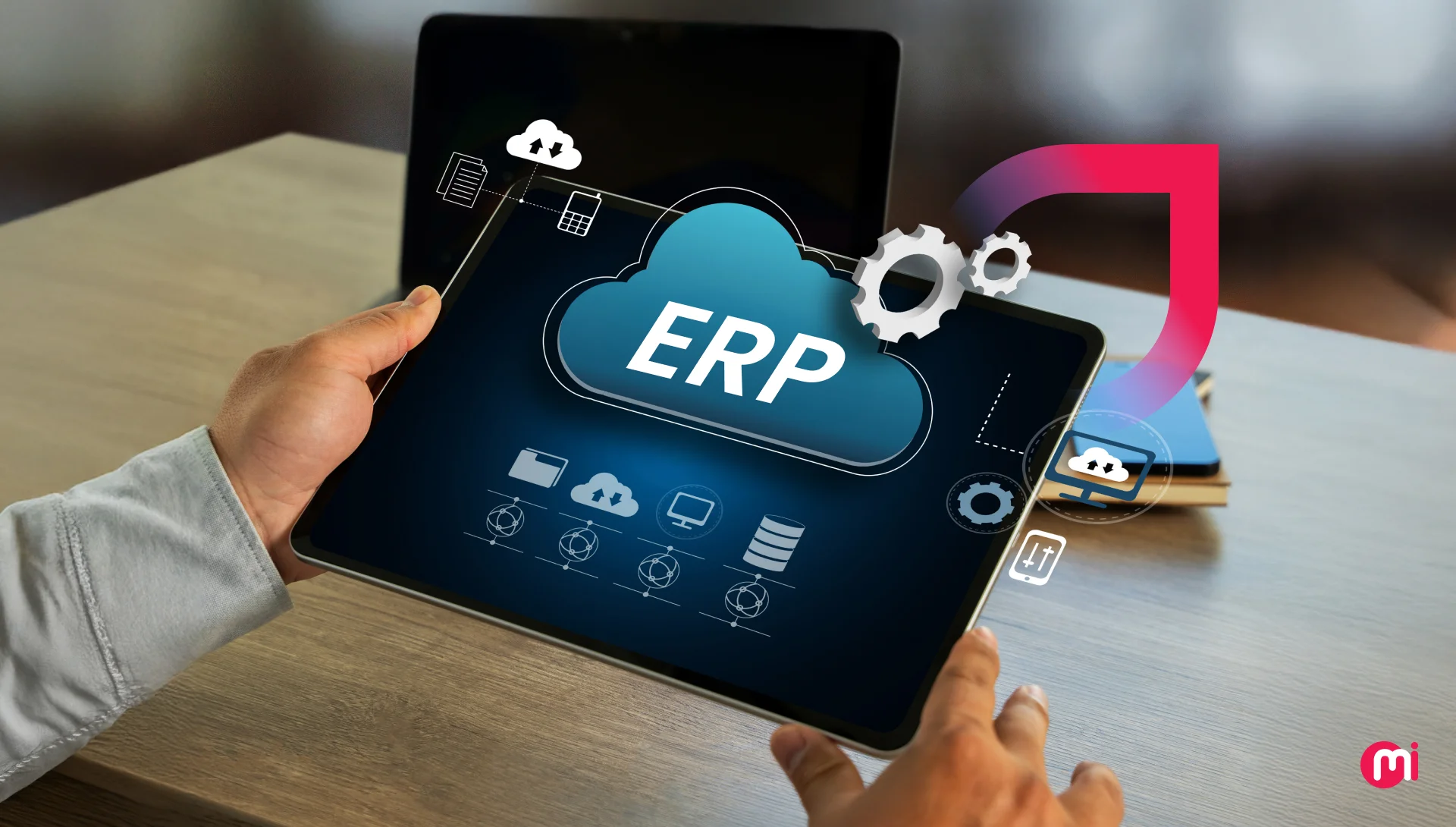Cloud Cost Optimization: Top 12 Best Practices To Adopt
- Cloud
- April 21, 2025
Why is our cloud bill still going up? If you’ve asked that lately, you’re not alone. But with the right architecture, visibility, and accountability model, you can take back control. This blog post lays out real-world cloud cost optimization strategies and best practices for modern tech decision-makers who are looking to optimize their cloud spending and unlock velocity.
Of the 90% of enterprises using the cloud, 27% of cloud infrastructure spending is wasted.
That’s roughly $44.5 billion of cloud cost being wasted!
Reasons are varied, including lack of visibility into real-time data, cloud resource usage data, idle/unused/orphaned/underutilized cloud resources, disconnect between FinOps and cloud cost management teams, and more.
This leads to nearly half of the enterprise not being able to drive or measure value from their cloud investments.
So, how to reduce cloud costs?
Cloud cost optimization strategies and best practices remain the key to addressing all of it.
So, here are some best practices that our cloud experts find effective in meeting your cost-saving-related cloud computing challenges.
But before that, here is a quick rundown on everything that you need to know about cloud computing cost management.

What is Cloud Cost Optimization?
Cloud cost optimization is a strategic approach businesses take to minimize or control their spending on cloud computing services while sustaining efficiency and performance. This approach includes using a set of cloud cost optimization best practices, measures, tools, and FinOps to reduce the cloud cost.
Businesses, either with in-house cloud infrastructure or leveraging cloud services, utilize it for maximizing the value of their cloud investments. However, it is not the same for all businesses due to the variation in cloud pricing and services leveraged by the businesses as well as the complexity of the cloud environments.
But what contributes to the business value derived from cloud cost optimization strategies?
Keep on reading to explore the benefits that cloud computing cost management and optimization offer to businesses.
Before that, many CIOs and CTOs first explored: The benefits and challenges of cloud migration and how to overcome them.
Why is Cloud Cost Optimization Important?
The business value is derived from having better control over the cost. Here is how cloud cost management strategies help businesses have better control over their cloud computing service spending:
1. Cost Visibility and Control
Adopting best practices and FinOps helps the business make the team more aware of cloud costs. This comes from teams and decision-makers leveraging real-time dashboards or cloud cost management tools, giving insights into cloud spending across projects and services.
Further, in terms of cost control or high cost savings, the data from these dashboards also facilitates the teams’ setting limits on their cloud computing services’ cost. The historical usage analysis and alerts on these limits set in cost monitoring and reporting tools keep the teams from exceeding their fixed spending budget, hence, smarter budgeting.
Henceforth, when this budget is allocated to the team for a project or when offering cloud application development services, the visibility makes governance easier and increases the accountability of the team on the usage of the budget.
2. Better Use of Resources
In other words, it helps in reducing resource waste and improving efficiency. Cloud cost management not only offers visibility into the cost but also the usage of the resources. This, in turn, will help the teams to identify underutilized or overprovisioned instances and data-backed decisions on rightsizing and scaling the instances.
For instance, during the non-peak hours, most (90% in some cases) of the resources are idle and wasted. Companies can leverage rightsizing and autoscaling tools to manage these mismanaged cloud resources. So when the peak hour arrives, the autoscaling tool would allocate the instances, keeping the performance of software or apps intact.
Companies offering managed cloud services can also opt for monitoring operational metrics to enhance the processing times and user experience of the software and apps. Based on it, you can optimize the performance threshold selection for each workload’s requirements (whether it be for traffic surges, temporary project environments, or so).
It also offers a wide variety of other benefits, including business continuity, enhanced resiliency, unhindered instance availability, greater sustainability, and more.
3. Effective Planning and Accurate Predictability
These tools, along with giving monitoring and data visualizing capabilities 24/7, also give access to a large amount of historical data. The data, with either using inbuilt data analytics features of the cloud cost optimization tools or enterprise-grade data analytics solutions, can be used to forecast cloud cost for accurate budgeting.
Apart from budgeting, this data can also be used for predictive analytics, helping you with risk mitigation associated with events of downtime and disruptions.
4. Reduce Security Risks
Cost optimization and security, well yes, it does help companies get that edge when it comes to reducing attack surfaces. It does so by providing you visibility into overprovisioned and underutilized resources, which you can eliminate, minimizing the attack surfaces.
This cloud security best practice, along with automating cloud provisioning, helps reduce the risk of leaving any loopholes, like misconfiguration, that may add to the increasing security risks.
Even when knowing the importance of cloud cost optimization, controlling costs has never been a piece of cake. The reasons are many, starting with cloud pricing models, decentralized cloud environments, setting up autoscaling policies that lack clarity, complexity of cloud billing, countless cloud configuration options, and more.
In terms of security, this would add an extra layer but would not be enough. This is why companies also leverage cloud security services for protecting their cloud environments.
However, here are some cloud cost optimization strategies and best practices that have and will keep organizations in cloud cost reduction.
Top 12 Cloud Cost Optimization Strategies and Best Practices

The cloud is the new normal (infrastructure), but despite it being the backbone of enterprise solutions or the companies that offer enterprise software development services, costs can spiral out of control when companies scale their operations on the cloud.
Here is your go-to strategy on how to reduce cloud costs and maximize ROI:
1. Adopt FinOps
Having an operational framework that sets the stage for understanding and adoption of cloud cost management organization-wide makes a larger impact. FinOps helps organizations do that. The heart of FinOps is the principles that help in conducting the activities without any confusion.
Introduction to FinOps principles
As far as FinOps practices are concerned, these principles guide the teams:
- Teams need to collaborate: Finance, engineering, operations, and business teams must work together to manage cloud usage and costs
- Business value drives technology decisions: by keeping cloud as a driver of innovation in mind, for better business impact, trade off among cost, quality, and speed.
- Everyone takes ownership of their technology usage: Engineers and product teams are empowered and responsible for the cost implications of their cloud resources.
- FinOps data should be accessible, timely, and accurate: Cost and usage data should be shared widely and in near real-time to enable fast decision-making.
- FinOps should be enabled centrally: A centralized FinOps function sets standards, tools, and governance while enabling teams to manage their usage effectively.
- Take advantage of the variable cost model of the cloud: Leverage the on-demand nature of the cloud to optimize spending, scale usage up or down, and avoid waste.
If FinOps is not a priority for your organization right now, you can consider adopting the following cloud cost optimization strategies and best practices.
2. Understand Cloud Cost Drivers
You can’t optimize what you don’t understand!
Unless and until you have the insight into what you are paying for, you may not have any clarity on whether or not you are paying away on cloud expenses.
So, your first step to regulating your cloud expenditure is understanding what contributes to the cloud computing service cost.
3. Identify Unused or Idle Resources
Unused resources neither deliver value nor look good on the bills.
To identify these resources, whether they be instances or storage monitor resources, ask the team to monitor resource utilization, especially after the completion of a project; chances are they might not have deprovisioned the resources. You can also use tools provided by CSPs like Azure Advisor which provides recommendations of shutting down unused resources along with details of the cost that it would save.
4. Right-Sizing Underused Resources
Underutilized resources are a silent drain on your cloud budget.
A major reason for the cloud cost going out of budget is that your cloud resource capacity does not match the actual usage. To reduce the cloud cost due to this requires reducing the size of over-provisioned instances and eliminating those that are no longer necessary.
To right-size underused or overprovisioned instances, you can try using cloud-native tools, as they recommend optimal instance types. Further, the cloud resources should be monitored regularly. For effective rightsizing, you can also leverage autoscaling and IaC technologies offered by the cloud service providers (CSPs), which are designed to automatically add or reduce the instances or storage based on the predefined parameters of the autoscaling policies set by you. So, there is also no possibility of wasting cost due to misconfigurations.
This way, you would not have to pay for the unused server instances.
5. Leverage Discounts and Savings Plans
If your workloads are steady, lock in discounts.
Here are some options that you can opt for that would add to cloud cost reduction further:
- Reserved Instances(RIs): If you have a predictable workload or require a production environment with stability and uptime, you can save up to 75% compared to on-demand pricing with this pricing model. It allows you to reserve computing capacity in advance for a 1-year or 3-year term; in exchange, the cloud provider gives you a discounted hourly rate for that instance type.
- Spot Instances: Not just you, even the CSPs have some unused capacity sitting idle. They offer these as Spot Instances. Whereupon the CSP gives access to that requested capability if available and at a steep discount (up to 90%) compared to on-demand pricing. However, if the cloud provider needs the capacity back, your instance gets terminated (interrupted)—usually with a 2-minute warning. They’re also not covered by typical uptime guarantees due to unpredictability.
- Savings Plans: If you do not commit to any specific instance type like RIs, this flexible pricing model allows you to commit to a specific dollar amount per hour (e.g., $10/hr) of compute usage over a 1-year or 3-year term rather than a specific resource. This pricing model can save you up to 72% on compute usage compared to on-demand pricing.
6. Monitor Cost Anomalies
Storage costs can sneak up on you.
This makes real-time cost anomaly detection critical.
Modern cloud platforms (like AWS, Azure, and GCP) offer native tools to detect unusual spending patterns. For cost optimization in AWS, you can use AWS Cost Anomaly Detection, which uses machine learning to notify you the moment your costs deviate from expected trends.
Further, you can enable daily or hourly billing alerts, configure notifications, and more to act upon the detected anomalies promptly to ensure that the project does not drift away from the allocated budgets.
7. Reduce Data Transfer and Networking Costs
Data egress and inter-region transfers can quietly inflate your bill.
Inter-region traffic, public IPs, and cross-cloud communication can stack up costs quickly if not optimized.
Here is what can help you in cost reduction:
- Consolidate resources in the same region or availability zone.
- Use PrivateLink, VPC Peering, or Cloud Interconnects to cut down on data egress charges.
- Cache frequently accessed data using CDNs like CloudFront or Cloudflare.
8. Implement Cost Allocation and Tagging
Without tagging, you’re flying blind.
To set the bar height for governance and accountability within your organisation, implement tagging. Proper tagging helps you track, manage, and optimize your cloud spending in a highly granular and meaningful way.
With it, you know you’re spending, but you don’t know who, why, or how.
To make it more effective, you can tag by department, project, and environment. Instead, you can also opt to automate tagging policies using tools like AWS Organizations or Azure Policy. The chargeback reports that you generate would give insights into each team’s spending.
9. Automate Cost Optimization with AI and ML
If manual cost reviews are too slow for you, AI-powered process automation is something that you can opt for.
Why it works: AI doesn’t sleep, and it constantly fine-tunes your infrastructure for optimal performance at minimal cost.
There are various cloud platforms (AWS Compute Optimizer, Azure Advisor, or GCP Recommender) today that offer intelligent recommendations for rightsizing, idle resource removal, and cost forecasting.

10. Regularly Audit and Review Cloud Spending
Optimization isn’t a one-and-done task.
As cloud usage grows, so does complexity. Services multiply. Teams expand. Resources evolve. Without regular audits and reviews, you can quickly lose sight of what you’re paying for—and why.
Build a habit: Review everything every month.
Here’s a detailed checklist of what you should look at during each audit cycle:
- Idle or unused resources
- Over-provisioned instances
- Underutilized reserved resources
- Data transfer costs
- Tagging and cost allocation
- Third-party subscriptions and licenses
- Budgets vs actuals
By auditing your cloud spending consistently, you ensure every dollar is accountable, every service is optimized, and every decision is data-driven.
11. Take Advantage of Multi-Cloud Deployments
A multi-cloud strategy isn’t just about resilience—it’s also a cost-saving powerhouse when used smartly.
Different cloud providers offer pricing advantages for specific services. By mixing and matching the best from each, you can optimize both cost and performance. To leave the hassle aside, you can also leverage cloud migration services; that way, the company you partner with would help you with strategizing your cloud deployments.
If not, here is an optimal way to strategize it:
- Use spot instances on AWS for compute-heavy workloads while leveraging Google Cloud for AI/ML.
- Balance storage across S3, Azure Blob, and GCP Buckets depending on access patterns and cost tiers.
- Use platforms like Terraform, Crossplane, or Pulumi for seamless multi-cloud orchestration.
It’s more complex, but the flexibility is worth it.
To strategize better, most execs referred to: Multi-Cloud vs Hybrid Cloud: Which Is Right for Your Enterprise?
12. Set Budgets
It’s fundamental to cloud financial discipline.
Budgets aren’t just about limits—they’re about making intentional, high-impact decisions.
A well-set budget not only forecasts cost—it also enforces accountability.
Here is what you can do when it comes to budgeting:
- Define budgets by team, workload, and environment
- Set automated hard/soft limits with alerts
- Tie budget usage to KPIs to track cost vs. value delivered
Currently, one of the most sought-after reads by decision-makers of enterprises: The Future of Cloud Computing
Drive Maximum Value From Cloud Investments With MindInventory
We believe that when it comes to making optimal use of cloud computing services, the real value lies in unlocking smarter workflows, faster operations, and scalable infrastructure that evolves with your business.
This is why we don’t just offer cloud services; we build intelligent, scalable, and future-ready solutions deployed on cloud environments designed to solve real-world business challenges.
Take the document processing solution we developed for customs departments, for example. A logistics automation solution we built to streamline high-volume document handling using Azure and AWS. By integrating AI-powered document recognition with a serverless architecture, we helped the client:
- Slash manual data entry time by 70%
- Boost accuracy with schema-based data validation
Automate document classification and real-time system integration
This is the kind of impact we aim to create—frictionless, cloud-native systems that drive clarity, efficiency, and confidence at scale.
Whether it’s cloud migration, cloud application development, or multi-cloud orchestration, we’ve built robust, production-grade architectures using platforms like AWS, Azure, and GCP—always with performance, security, and cost-efficiency in mind.
Want to explore how we can power your next cloud initiative? Let’s Talk.
FAQ on Cloud Cost Optimization
For any business, the cloud cost optimization journey started even before migrating.
– Review service level agreements (SLAs)
– Assess total cost of ownership (TCO)
– Evaluate provider scalability options
– Prioritize seamless integrations
– Understand security policies
– Assess backup and disaster recovery strategies
– Train and develop employees
Usually, cloud providers charge you based on resource usage. This primarily falls under the user pay-as-you-go model. However, to understand the overall cloud pricing, you need to consider the following aspects of a cloud bill:
– Compute costs
– Manager services costs
– Storage costs
– Bandwidth costs
– Service costs
– Support costs
– Pricing models
– Discounts and savings
Cloud cost models include pay-as-you-go (PAYG), reserved instances, fixed/prepaid subscriptions, spot instances, AWS savings plan, hybrid models, and more.
FinOps(Financial Operations), as the name suggests, is an operation framework based on financial management principles designed to help businesses derive more value from cloud technology spending. It helps organizations’ finance, business, and engineering teams to create a culture of financial accountability when it uses cloud computing services.













